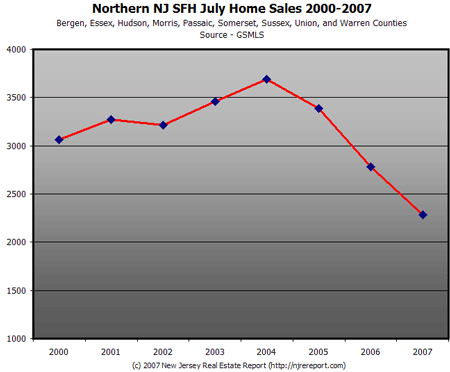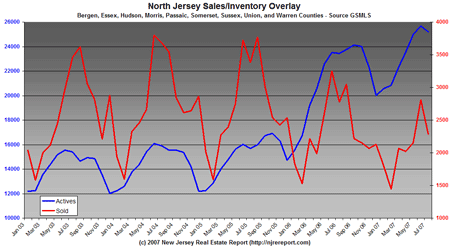From the WSJ:
Credit Crisis Hits Small Lenders
Mortgage-Loan Backlash Spurs Halt in Operations; Bigger Rivals Swoop In
By JAMES R. HAGERTY, RUTH SIMON and JONATHAN KARP
August 15, 2007; Page A3
The mortgage credit crunch is tightening its grip on thousands of small to midsize lenders and brokers, allowing giant lenders to grab a bigger share of the market.
In the latest outbreak of anxiety, shares of Thornburg Mortgage Inc., a Santa Fe, N.M., specialist in large prime home loans, dropped 47%, or $6.67, to $7.61 as of 4 p.m. in New York Stock Exchange composite trading. Thornburg said it will delay its second-quarter dividend payment and has been getting margin calls from creditors, requiring the lender to make payments to make up for the declining value of mortgages used as collateral for those borrowings.
GMAC LLC, which provides short-term loans to many smaller lenders to let them fund mortgages until they can be sold to investors, severely tightened its terms yesterday, according to a memo sent to those lenders.
Many small mortgage banks that specialize in loans that are out of favor with investors — anything other than those that can be sold to government-sponsored investors Fannie Mae and Freddie Mac — are “desperate,” said Doug Duncan, chief economist at the Mortgage Bankers Association, a trade group. He added that the credit crunch will cause a larger rise in defaults than previously expected. Borrowers will find it harder to refinance to avoid rising payments on adjustable-rate mortgages, and the difficulty of lining up loans will hurt house prices.
Brokers are suffering too as lenders rapidly change their guidelines and rely more on their own employees to originate loans. “We’re seeing record numbers of people going out of business right now simply because there’s a lack of programs and products to offer,” said George Hanzimanolis, a mortgage broker and banker in Tannersville, Pa., and president of the National Association of Mortgage Brokers. “I’ve never seen this many people going out of the business or telling me, ‘I can’t do this anymore. What we used to specialize in is no longer available.'”
Even before the latest turmoil, research firm Wholesale Access projected that the number of mortgage brokerages in the U.S. would drop to 35,000 by the end of 2008 from 53,000 in 2006.
…
Thornburg said that it has had to delay funding of some mortgages and that there have been “disruptions” in its ability to raise money through issues of commercial paper and asset-backed securities. The company completed $3.5 billion of home loans in the first half, putting the company outside the top 40 lenders. But Thornburg is known in the industry as a provider of prime jumbo loans — those over the $417,000 limit on mortgages that can be sold to Fannie or Freddie.
…
GMAC’s Residential Funding Co. said that as of today it won’t provide so-called warehouse funding for subprime loans and mortgages for borrowers who don’t verify their income or assets. It also ruled out mortgages for investment properties and home-equity loans to borrowers with credit scores lower than 720.GMAC’s changes reinforce a broader move toward fully documented loans, but even there, new restrictions apply that could affect business in expensive markets such as California. For instance, GMAC said that for loans above $417,000 that exceed 80% of a home’s purchase price, it will advance only 93.5% of the loan’s value, meaning that mortgage bankers will have to carry 6.5% of the loan’s cost until it can be sold to an investor. Until now, it had advanced 99% of the loan’s value. To direct more business its way, GMAC also lowered the amount of warehouse funding for loans that would be sold to other investors.
…
Another provider of warehouse loans to mortgage banks, National City Corp., “has temporarily suspended funding” from one of its two warehouse-lending operations of most types of mortgages that can’t be sold to Fannie and Freddie, a National City spokesman said.
…
Steven Walsh, a mortgage broker in Scottsdale, Ariz., said that 50% to 60% of the loan applications he takes now turn into completed loans, down from 90% a year ago. Tighter guidelines aren’t the only problem. In the past three months, Mr. Walsh has seen 100 deals fall through because the appraisal came in too low to support the transaction. “Our goal is to stay in the game,” he said.





